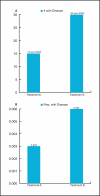A theory of medical decision making and health: fuzzy trace theory
- PMID: 19015287
- PMCID: PMC2617718
- DOI: 10.1177/0272989X08327066
A theory of medical decision making and health: fuzzy trace theory
Abstract
The tenets of fuzzy trace theory are summarized with respect to their relevance to health and medical decision making. Illustrations are given for HIV prevention, cardiovascular disease, surgical risk, genetic risk, and cancer prevention and control. A core idea of fuzzy trace theory is that people rely on the gist of information, its bottom-line meaning, as opposed to verbatim details in judgment and decision making. This idea explains why precise information (e.g., about risk) is not necessarily effective in encouraging prevention behaviors or in supporting medical decision making. People can get the facts right, and still not derive the proper meaning, which is key to informed decision making. Getting the gist is not sufficient, however. Retrieval (e.g., of health-related values) and processing interference brought on by thinking about nested or overlapping classes (e.g., in ratio concepts, such as probability) are also important. Theory-based interventions that work (and why they work) are presented, ranging from specific techniques aimed at enhancing representation, retrieval, and processing to a comprehensive intervention that integrates these components.
Figures


References
-
- Reyna VF, Brainerd CJ. Fuzzy-trace theory and framing effects in choice: gist extraction, truncation, and conversion. J Behav Decision Making. 1991;4:249–62.
-
- Reyna VF, Brainerd CJ. Fuzzy-trace theory: an interim synthesis. Learning Individual Differences. 1995;7:1–75.
-
- Reyna VF, Brainerd CJ. Fuzzy-trace theory: some foundational issues. Learning Individual Differences. 1995;7:145–62.
-
- Reyna VF, Brainerd CJ. Fuzzy trace theory and false memory: new frontiers. J Exp Child Psychol. 1998;71:194–209. - PubMed
-
- Gail MH, Brinton LA, Byar DP, et al. Projecting individualized probabilities of developing breast cancer for white females who are being examined annually. J Natl Cancer Instit. 1989;81:1879–86. - PubMed
Publication types
MeSH terms
Grants and funding
LinkOut - more resources
Full Text Sources
Medical

